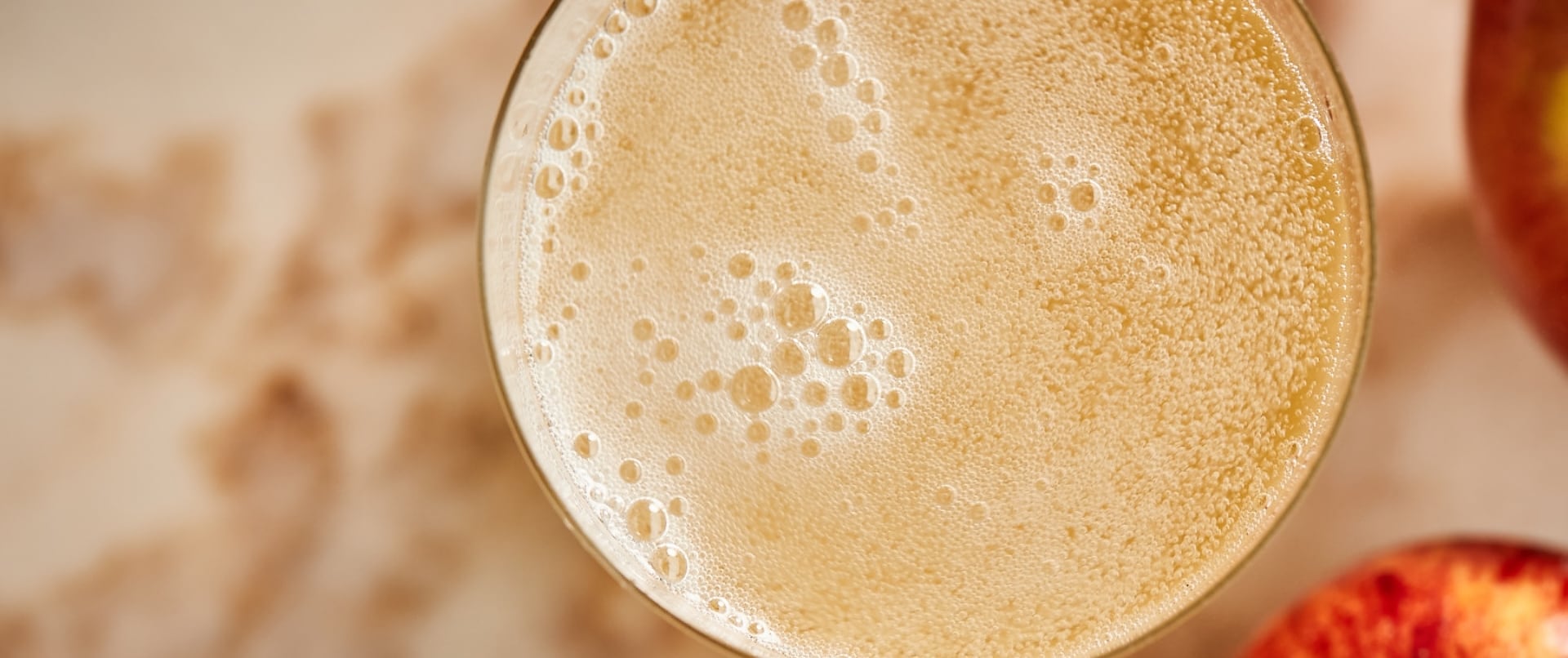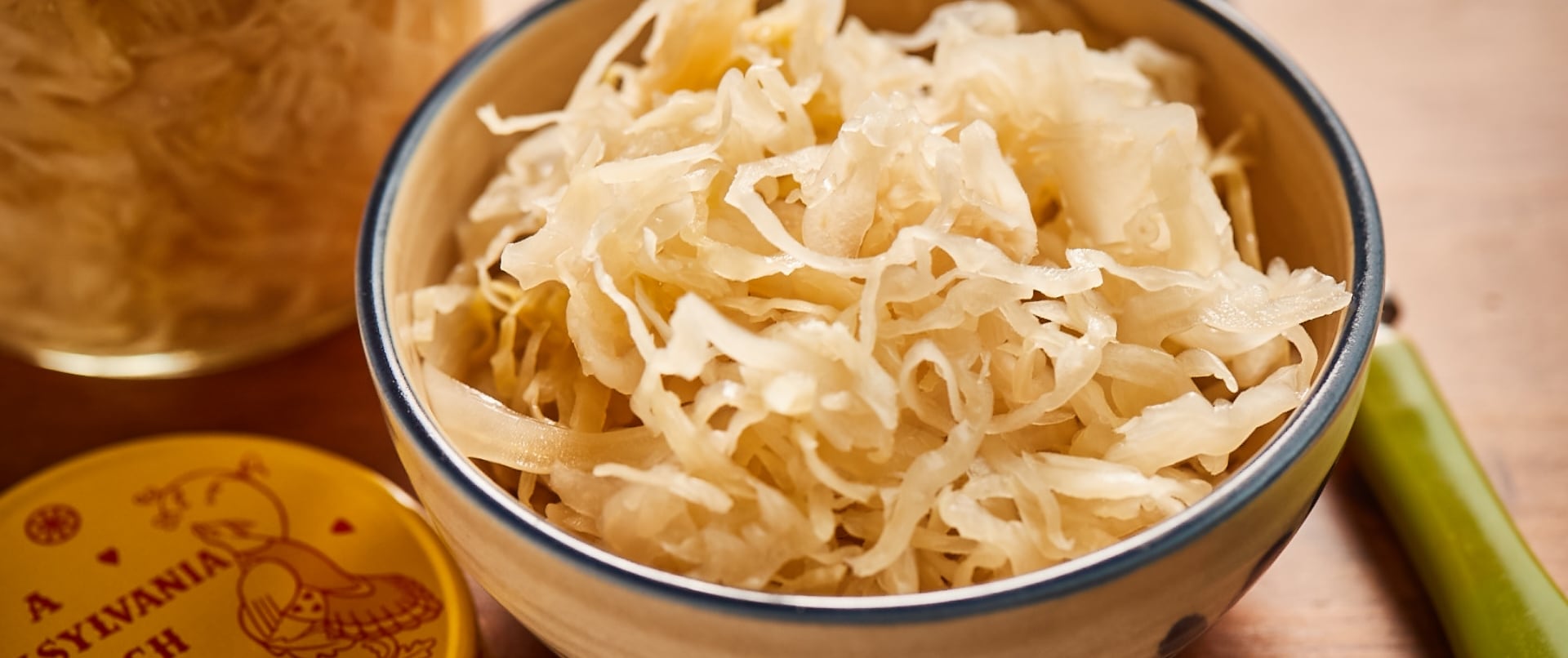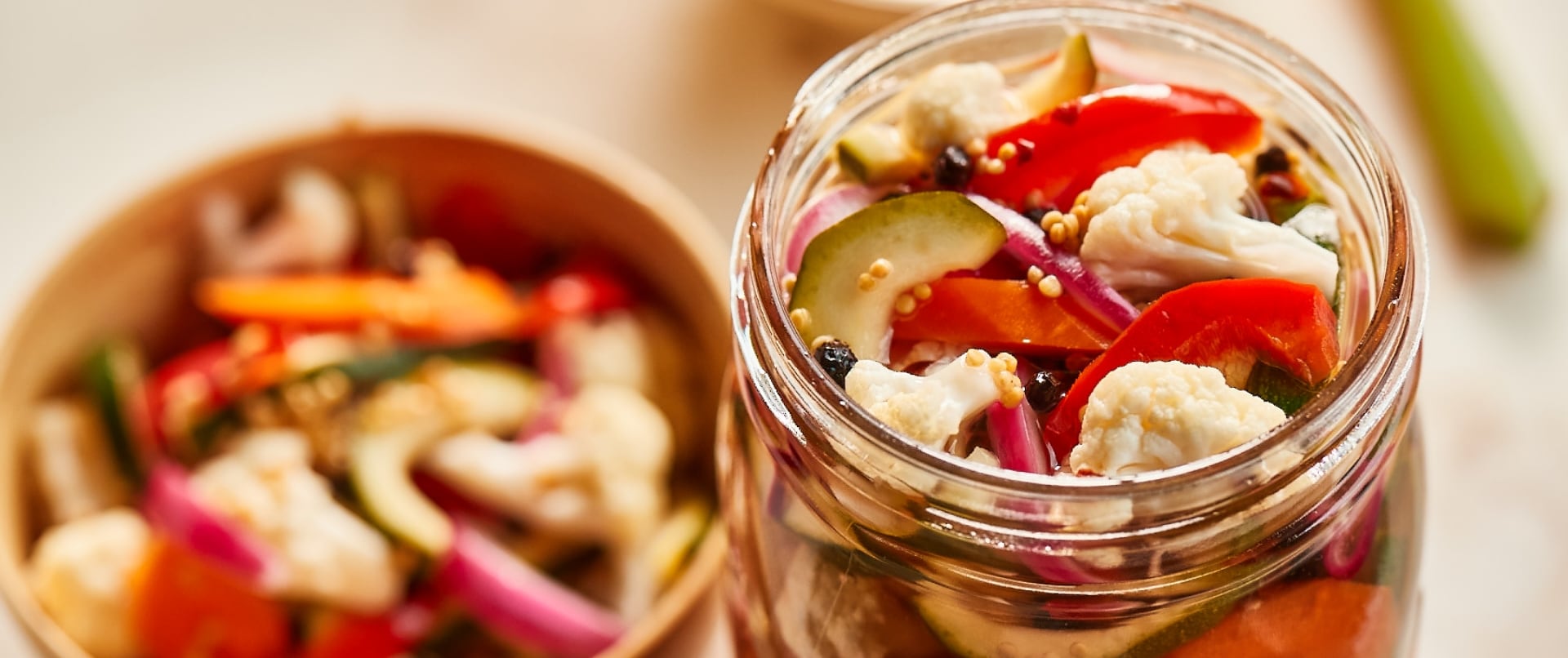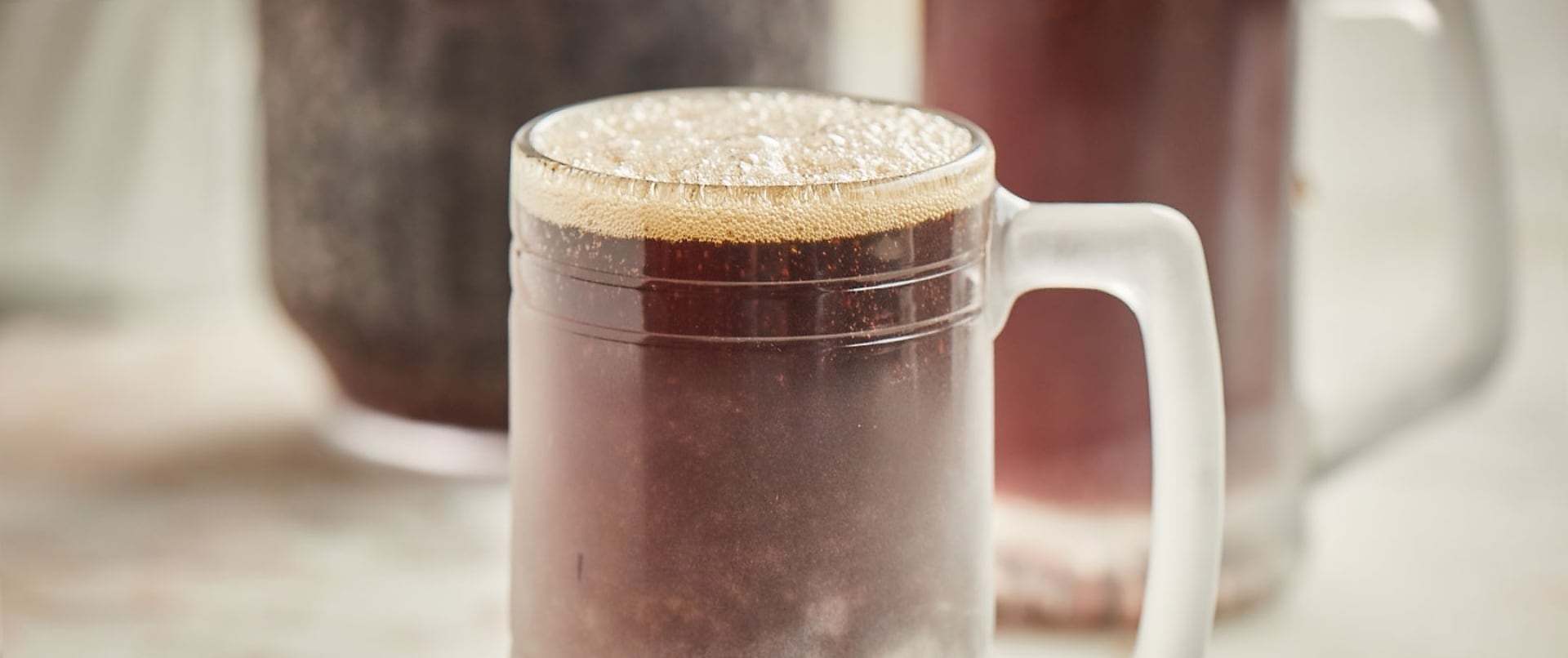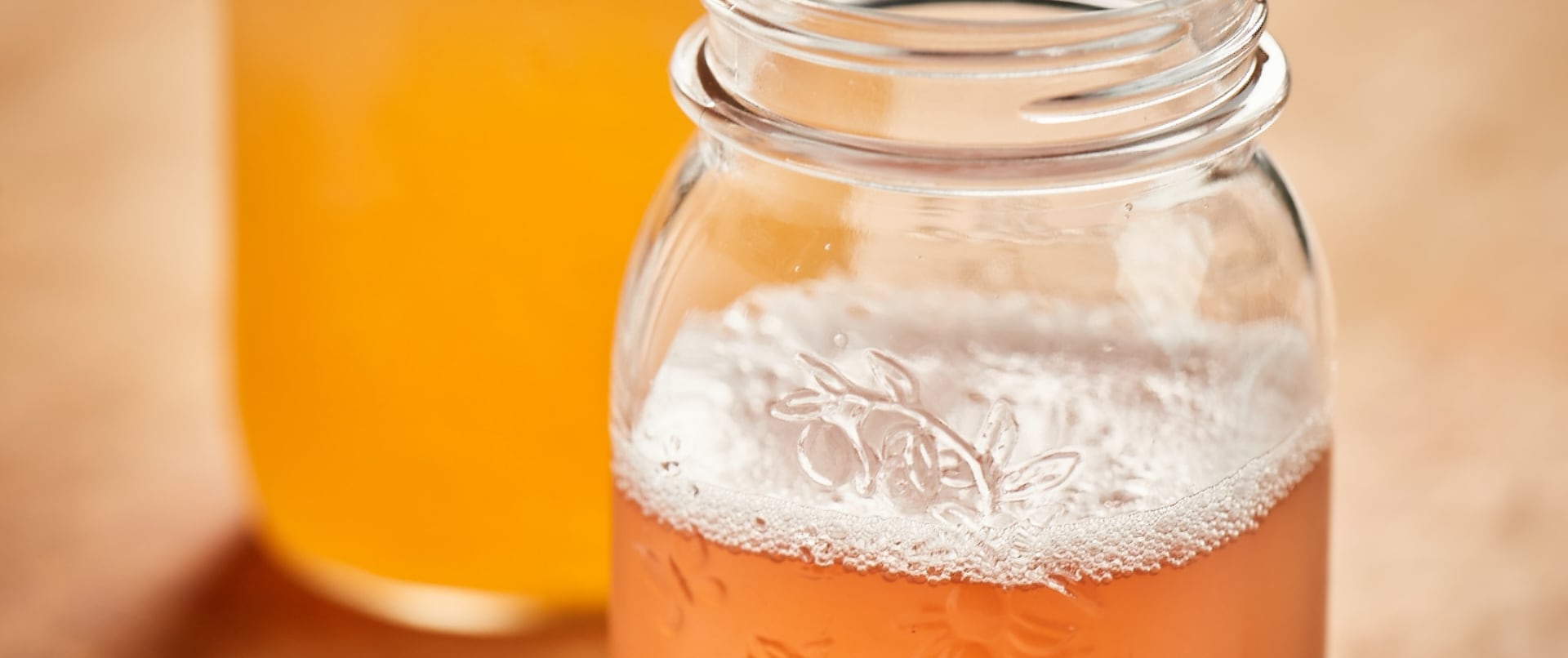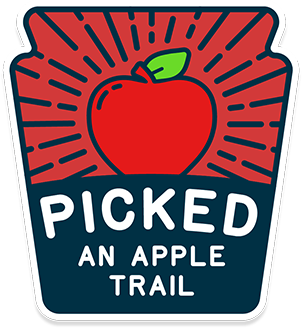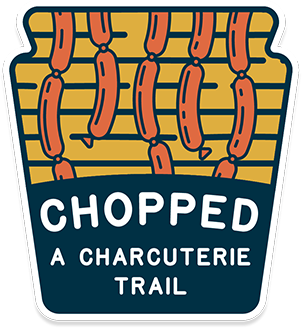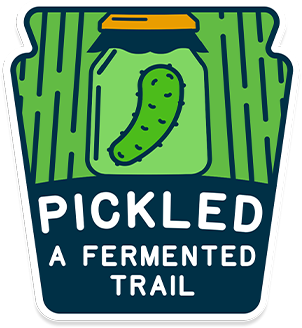
Pickled: A Fermented Trail
Not only has the process of fermentation been used for centuries as a preservation technique, but it's also known that some fermented foods are richer in nutrient content. And, the only thing better than the health benefits is the taste. Fermented foods have become the go-to way to cut creamy or fatty food with acidity.
Additionally, fermentation has given us some of PA's most famous offerings including hard cider, wine, beer, and kombucha. So to PA and fill a sweet day with sour flavors.
Select a region to view an itinerary
Cultured foods have been part of PA’s culinary culture since the beginning.
Cheese, vinegar, wine, hot sauce, beer, olives, yogurt, kefir, water processed coffee, some tea, tempeh, sourdough breads, kimchi, kombucha, and miso are just a few common examples of fermented foods.
There are a few different ways that fermentation takes place. With some products, the cultures must be “fed” to continue to ferment. For example, yogurt and kefir usually require milk, sourdough requires flour or other grains, and kombucha requires sweet tea. Other foods, such as butter or cottage cheese, are fermented by “culturing” them. Culturing usually means that a microbial starter has been added. Lastly, in wild or spontaneous fermentation, organisms naturally present on the food or in the air begin the fermentation process, giving the final product a real taste of regional terroir.
Many groups that have migrated to Pennsylvania throughout history were fond of fermented foods for both health and flavor, as well as for preserving food through the winter. For example, sauerkraut, pickled vegetables, and root beer have been prepared in Pennsylvania kitchens and markets for hundreds of years because of the large number of German migrants to our state beginning in 1727. Additionally, the large number of Eastern European immigrants that began arriving in the late 1800s brought their own recipes for pickles and fermented cabbage. Cookbooks that reflect favorite family recipes from this time have recipes for Hungarian Sauerkraut Soup, Slovak Sauerkraut Relish, Polish sauerkraut filled pierogis, and Croatian Sauerkraut and Bean Soup. These are dishes that residents continue to enjoy to this day.
The recent popularity of items such as kombucha and kefir has added to a large number of fermented products available in Pennsylvania. Although these fermented beverages aren’t new to many parts of the world, today Pennsylvanians are often trying them for the first time.
Sauerkraut
Genghis Khan is credited with introducing sauerkraut in Europe before it eventually made its way here to the United States. Sauerkraut folklore is plentiful among Pennsylvania Germans. Some say that sauerkraut made in Pisces will become watery. Others believe if it is made on the 16th of October, St. Gall's Day, that it will be bitter.
Peter Kalm, a Swedish botanist and naturalist, was the first to document Pennsylvanians’ love of kraut in the 1740s during a visit to the colonies, and by the Civil War, migrants of many origins, English, Dutch, Quakers, and Scots Irish, were all eating sauerkraut. Sauerkraut had become so popular that when General Lee took possession of Chambersburg on his way to Gettysburg, he demanded 25 barrels of kraut for his army.
However, sauerkraut was not always well-liked. In 1865, the Chambersburg newspaper referred to it as “pickled manure.” But by 1872, the York Daily newspaper declared, “times have changed and now, not to eat sauerkraut is to be lacking in one of the most fashionable accomplishments of the day."
By 1900, sauerkraut was a widely accepted dish, with churches hosting sauerkraut suppers across the state that continue to this day. Kraut suppers in Cameron County often included buckwheat, potatoes, and cabbage, while dinners in Lancaster and Mercer County usually included pork or ham. Sauerkraut and turkey dinners were commonly held in the middle of the state near Harrisburg. A goose stuffed with fermented cabbage was a particularly popular tradition among Eastern Europeans. Pennsylvania Germans later adopted this, and it became a popular Thanksgiving dish in many parts of the state.
Pickled Vegetables
During the Great Depression, for example, many families canned produce from their garden during times of hardship. The popular pickled relish chow chow (pickled vegetable relish) is a great example of the region’s seasonal preservation practices. Chow chow is a Pennsylvania German sweet and sour pickled mixture of vegetables, many of which were often leftovers or end-of-season vegetables. In fact, it was often called “end of season relish.” The origin of the name is disputed. Some think it was derived from the French word for cabbage “chou.” Others think it came from the Native American slang name for chayote squash “chow chow.” Piccalilli is another historically popular Pennsylvania dish rooted in a British interpretation of South Asian mustard pickles. It is a seasoned vegetable relish that often contains red or green peppers, onions, cucumber, cauliflower, beans, or seasonal vegetables.
Preserved foods were also historically popular for religious celebrations. Pickled beets with horseradish were part of the traditional Carpatho-Rusyn Easter basket. It was common among Carpatho-Rusyns and other Slavic groups to take a basket of food to church on Easter to be blessed before breaking their Lenten fast. A mixture of horseradish, grated beets, and sugar called chrin was usually included in this basket. The bittersweet, red mixture was considered symbolic of Christ’s suffering. Sauerkraut and beans were also a common Christmas Eve meal, along with bobalki, dough balls filled with poppyseeds or sauerkraut.
Pennsylvania also has an industrious history of manufactured pickled products largely due to Pittsburgh’s H.J. Heinz Company. The Heinz Company was a trendsetter in the industry. They were one of the first companies to display their pickled and canned foods in clear glass jars instead of the brown or green jars commonly used at that time. This allowed customers to see the product’s purity. Prior to this, manufacturers often put coal tar dyes, wood fiber, turnips, leaves, or boiled dried apples in their products as fillers.
Where Pennsylvania was once known mainly for jarred chow chow or piccalilli (pickled vegetable relishes) and cucumber pickles, visitors can now find Korean kimchi, Bulgarian pickled peppers, Italian marinated eggplant, and more in many neighborhoods.
Root Beer
Charles Elmer Hires, a pharmacist and teetotaler (someone who does not consume alcohol) from Philadelphia, was the first to successfully market a commercial brand of root beer. In 1875, he had developed a sassafras based, yeast fermented root tea. This root tea had a bit of effervescence from the yeast but very little alcohol overall. Hires then went on to exhibit a commercial version of this concoction at the Philadelphia Centennial International Exposition in 1876 and began selling it widely around the state soon after that.
In 1886, Hires began to bottle a beverage made from his now-famous extract. He had wanted to call the drink “root tea” but in order to better market it to Pennsylvania’s coal miners, he named it "root beer" instead. By 1893, root beer was distributed widely across the United States. Non-alcoholic versions of root beer became commercially successful, especially during Prohibition.
Driving along the backroads of Pennsylvania, it is not uncommon to see signs for homemade root beer outside of farmhouses. Many mid-state farm markets also have vendors who carry homemade varieties, which are often made from sarsaparilla, teaberry (the flavor of wintergreen), and yeast.
Kombucha and Kefir
Kombucha and kefir are beverages fermented through the use of a SCOBY: Symbiotic Colony Of Bacteria and Yeast. Kombucha is made from a base of tea and sugar with other juices and herbs often added. The SCOBY eats up the sugar and ferments the sweetened tea into kombucha. It is a drink prized by many cultures for its health-promoting qualities. In fact, kombucha first appeared in Northeast China around 220 BC where it was lauded for its healing properties. The drink is actually named after Dr. Kombu, a Korean physician who was trying to use the beverage to cure a Japanese emperor at the time. Today, kombucha is the fastest growing product in the Functional Beverage Category. The scientific evidence about kombucha's life-enhancing properties is spotty, but many swear by it. Regardless, it is a tasty treat.

Kefir originated in the Caucasus Mountains region of Russia and is one of the oldest though less commonly known cultured products. There is a history of longevity in the region that many attribute to the popularity of kefir beverages. Sweet and sour in taste, kefir is fermented by kefir grains, tiny pebble-like SCOBY. These grains were historically guarded by their owners and passed from one generation to the next. The small grains are added to milk or sometimes juice (to make water kefir) and left to sit overnight. The result is a tasty drink, not as robust as kombucha, but refreshing and delicious.

Vinegar
Vinegar is a pungent, sour, and acidic solution of fermented wine, apple cider, or other substance and is the result of the bacterial conversion of an alcoholic solution into acetic acid.
The oldest-known vinegar dates back to 5000 BC and was made by the Babylonians using date palm. Today, we have many types of vinegar and not all are fermented.

